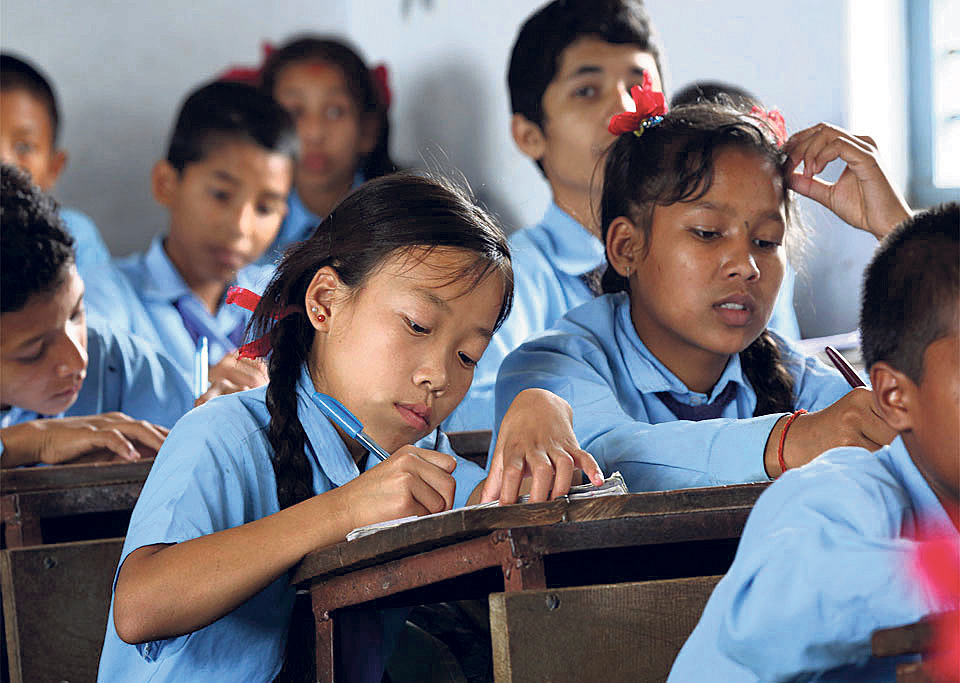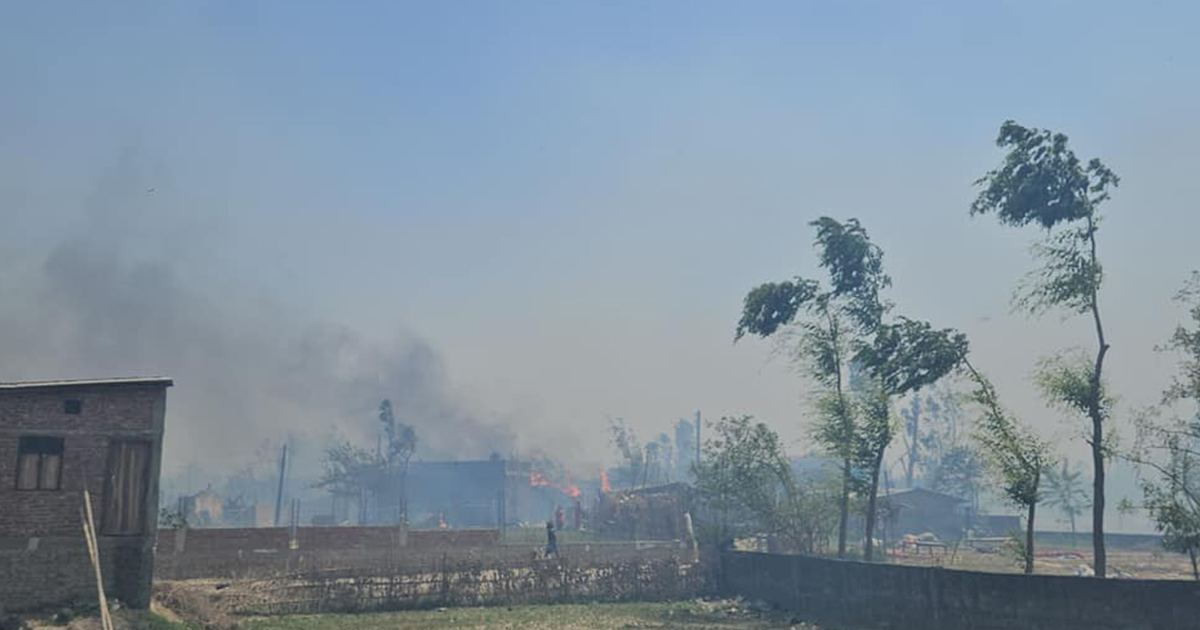
OR
Editorial
Make Education Actually Free
Published On: December 23, 2022 07:30 AM NPT By: Republica | @RepublicaNepal

Right to education is one of the fundamental rights of the Nepali people as enshrined in the country’s constitution. Article 31 of the Constitution of Nepal 2015 states, “Every citizen shall have the right to get compulsory and free education up to the basic level and free education up to the secondary level from the State.” To implement this constitutional provision, Nepal’s parliament in 2018 enacted the Right to Free and Compulsory Education Act. So, constitutionally and legally, Nepal has upheld the right to education as an enforceable sacrosanct human right. As a result, the Nepali state has committed to provide compulsory and free education till Grade 8 and free education from Grade 9 to Grade 12 in all community schools. Also, the Act provisions that a person, who has not received basic education, will not be entitled to get a government or non-government job after 2028. This provision which gives the message that the right to education is a part of the fundamental human rights is based on the assumption that education till the secondary level is completely free in the country. According to the Act, at least the community schools cannot charge either the student or his/her guardian any kind of fee under any heading for education up to the secondary level.
Based on this notion, each of the governments formed over the last few years, has mentioned the “free education” slogan in their budgets and policies and programs. However, have the children in Nepal been able to receive free education as guaranteed by the constitution and laws? The answer to this question is a ‘No’. Free education in Nepal has just been a myth which exists only on paper. In reality, no community school in the country has been able to provide “free” education so far. Even the community schools have been forcing the students and their guardians to pay different kinds of fees under various headings. The above-mentioned Act makes it clear that neither the children nor their guardians can be forced to pay any kind of fees - admission fee, annual fee, monthly fee, examination fee, stationary and other education materials fee and extracurricular activities fee etc. However, the community schools in the country have been charging the students fees under some or all of these headings even for the basic level education. This clearly shows that the government has been making false promises of free education without any real intention to deliver on those promises.
It goes without saying that the government came up with the constitutional and legal provisions for free education at least up to the secondary level because it knows that not all Nepalis can afford to pay for their children’s education. It is said that about a quarter of Nepal’s population still lives below the national poverty line. We cannot expect the parents in this segment of the population to pay fees to send their children to school when they have to struggle even to make their ends meet. A question that arises here is why do the schools charge fees for the education which is supposed to be free? The answer is - the funds they receive from the government to run this “free education for all” movement are not enough and the schools are forced to raise the amount of funds they are short of, obviously, from the students. So, one of the major problems is that “free” education is not actually free! This has had impacts on the country’s school enrollment and dropout rates. The enrollment rates have improved but they could have been even better, had the government been actually able to implement the constitutional and legal provision of free education. Similarly, the country would have seen the much-needed improvement in the school dropout rates if the government had been able to walk the talk of free education.
You May Like This

Education minister brings roadmap for education sector
KATHMANDU, April 11: Minister for Education, Science and Technology (MoEST) Giriraj Mani Pokharel on Wednesday unveiled a seven-page roadmap for... Read More...

State-Minister for Education Adhikari bats for education reform
CHITWAN, Sept 27: State-Minister for Education, Sheshnath Adhikari, has given a clarion call to the concerned authorities to bring about... Read More...

Rights of every student to quality education secured: Education Minister Shrestha
KATHMANDU, June 14: Deputy Prime Minister and Education Minister, Gopalman Shrestha has said that the right of every student of... Read More...





Just In
- World Malaria Day: Foreign returnees more susceptible to the vector-borne disease
- MoEST seeks EC’s help in identifying teachers linked to political parties
- 70 community and national forests affected by fire in Parbat till Wednesday
- NEPSE loses 3.24 points, while daily turnover inclines to Rs 2.36 billion
- Pak Embassy awards scholarships to 180 Nepali students
- President Paudel approves mobilization of army personnel for by-elections security
- Bhajang and Ilam by-elections: 69 polling stations classified as ‘highly sensitive’
- Karnali CM Kandel secures vote of confidence














Leave A Comment